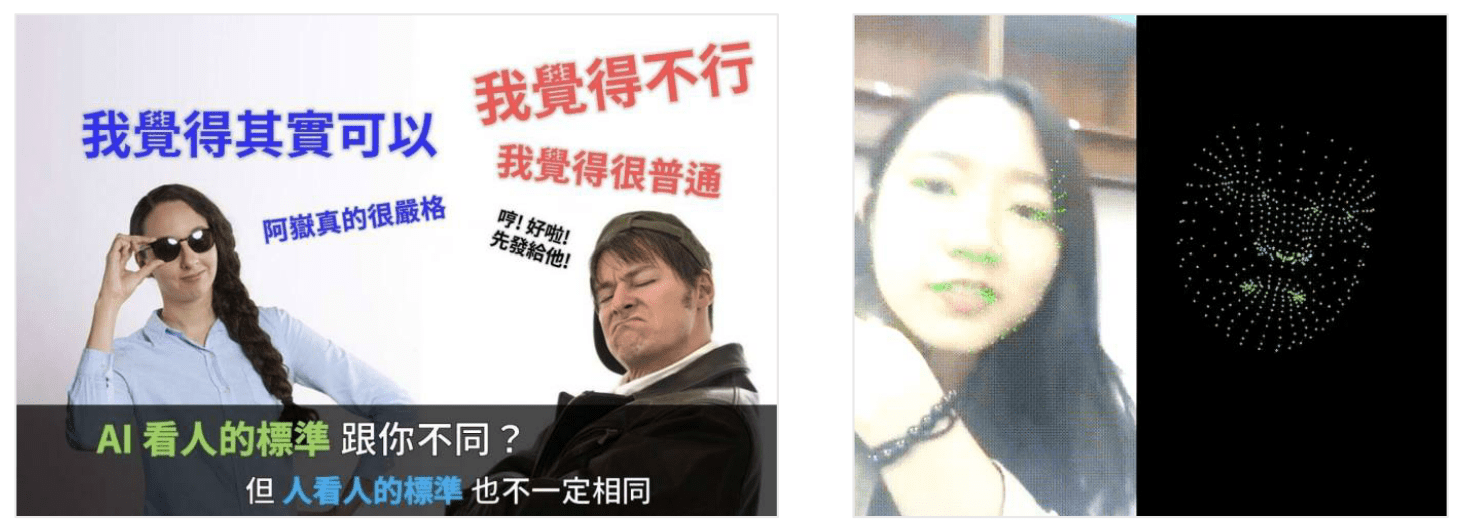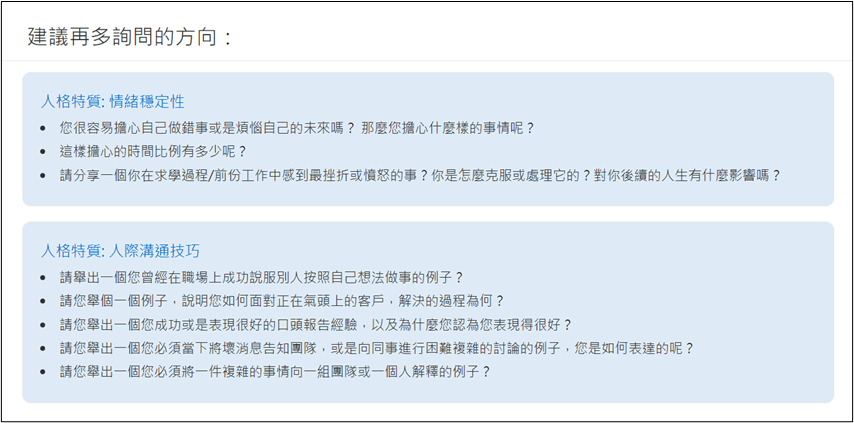The Blog
How does HR apply the reports analyzed by AI?
After implementing HRDA (Human Resource Digital Assistant) – AI video interview system, HR often asks:
– How to correctly apply the trait report analyzed by AI?
– Is the report accurate?
– Why is the result analyzed by AI different from my own observation?
We believe that science – AI and big data technologies continue to evolve, and so do their analytical capabilities and accuracy.
Usually interviewers have a lot of experience in recognizing people, but with advances in image processing and cloud computing, AI is being used in a much wider range of applications. Today, we can think of AI as a super interviewer who has seen a lot of people.
AI has observed the expressions of countless job seekers, and can even recognize changes in micro-expressions that are difficult for the average person to detect, and map these expressions to personality traits. Many studies have shown that there is a correlation between micro-expressions and personality traits, and that these correlations are stored in the AI’s memory to form a constant pattern.
When a new applicant conducts an AI-recorded interview, the AI will analyze his/her dynamic micro-expression changes and compare them with the norms, and then compare them with a person it has seen in the past, so as to infer the possible personality traits of this applicant, and then produce a report of the applicant’s personality traits through the HRDA system, which is a scientific statistical reference data.
A common challenge is that HR feels that there is a discrepancy between the results analyzed by the AI and their own observations, but in fact, different interviewers may have different opinions about the same job applicant. How can we guarantee that “people” will always be accurate?

Since AI is to calculate the interlinked changes among the points by labeling the facial expression points, in the eyes of the machine, the evaluation result will not be affected by the appearance or face value; and the machine will not be tired, but the human being will be tired, and if the HR is facing thousands of job applicants and has to give comments on each of them individually, it’s hard to guarantee that the evaluation can be fair and objective; and it’s even hard to guarantee that it won’t be the result of the HR’s roughly looking at the job applicant’s interview status and entering a few keyword tags. Even in the current situation, it’s hard to guarantee that HR will not just take a cursory look at the applicant’s interview status, enter a few keywords and tags, and then directly use chat GPT to complete the interview report to meet the deadline.
Therefore, using AI analysis reports as a reference is actually a relatively more scientific approach, especially since the development of AI can gradually modify the model, and the larger the amount of data, the more accurate the resulting big data analysis will be.
How can AI be used to analyze data in the HRDA system?
The public version of the AI analysis report produced by the system now includes the following indicators: interpersonal communication skills and the five personality traits (emotional stability/extraversion/openness to experience/affinity/responsibility), etc. The scores for each trait are presented as PR values, which represent how many times the job seeker would be ranked higher than a group of 100 people after the data is standardized.

However, trait scores are relative concepts, and higher scores are not necessarily better. For the recruitment of enterprises, the qualities emphasized for each position may also be different (if this part is to accurately meet the current hiring tendency of the enterprise, it will be recommended to carry out a separate modeling project); for example, for the position of “Engineer”, some companies may give priority to assessing due diligence and openness to experience in their selection of talents, and care least about affinity, i.e., the order of the company’s selection of talents is as follows: Due Diligence>Openness to experience>Interpersonal communication>…skills>…>…>…>…. Interpersonal communication skills >…>…>…affinity.
Therefore, in practice, we can use the export function of the system to export all the information of job applicants for a certain vacancy into an excel file, and then adjust the data sorting for each trait score to filter out the candidates who meet the expectations of the enterprise, and invite them for further interviews.

However, it should be noted that the recruitment of talents mainly evaluates their “professional ability” and “personality traits”, but the demand for these two items varies from job to job. For example, the recruitment of reserve cadres usually emphasizes their “personality traits”, but the “professional ability” of engineers is usually more important than their “personality traits”. Therefore, before evaluating the engineer’s preference of each trait, it is suggested that we can first look at the status of his/her video answers, and then the employer’s supervisor will first select the candidates who meet the professional expectations, and then rank the trait preferences from the list, so as to make the recruiting work more efficient.
As mentioned above, HR may feel that there is a discrepancy between the AI analysis results and their own observations, therefore, the system has directly designed corresponding questions for certain traits that have particularly low scores in the report. If HR feels that a certain candidate has performed well, they can still be invited to the next stage of the interview, and at that time, they can directly ask questions about these low-scoring traits in order to clarify the cognitive differences between the supervisors and the AI.
